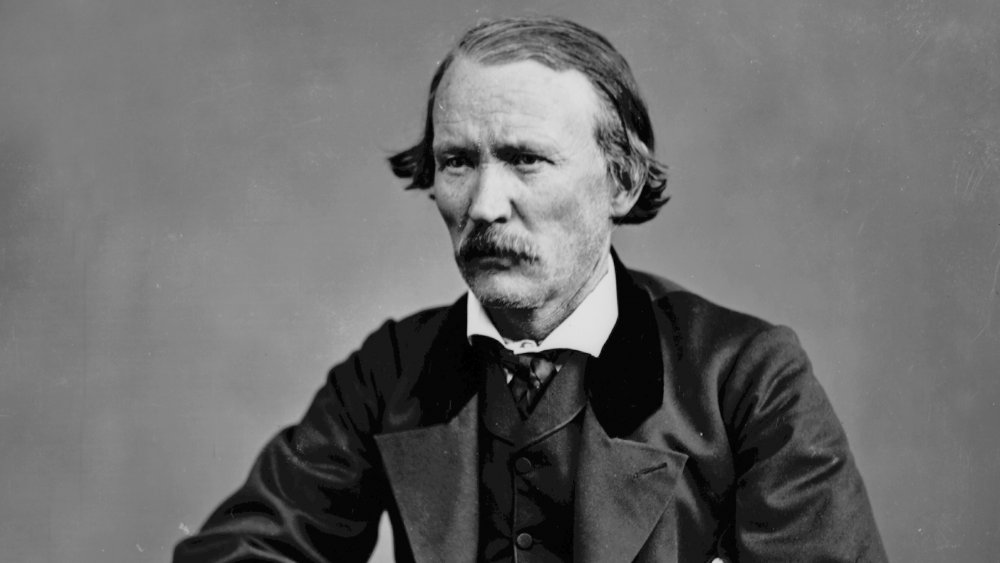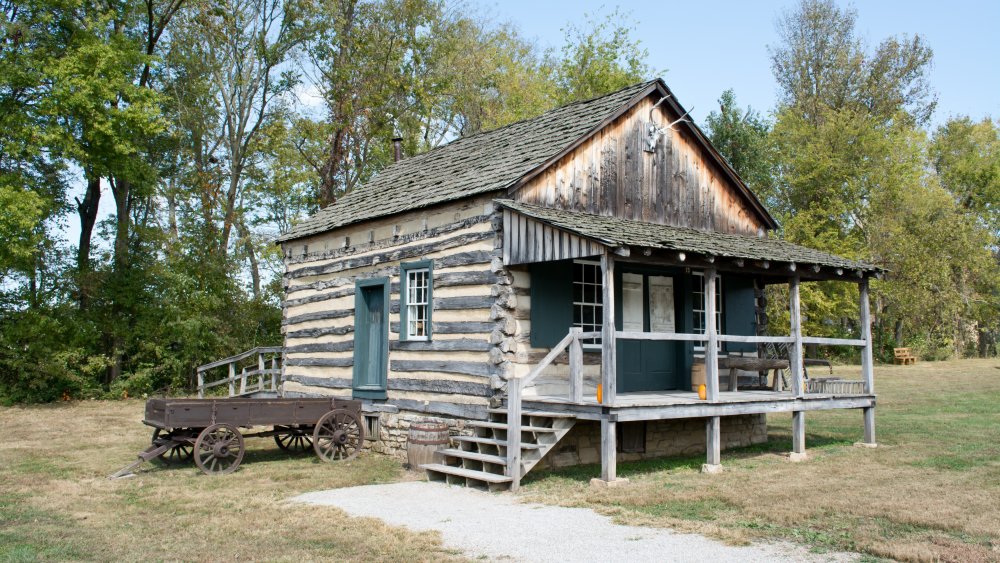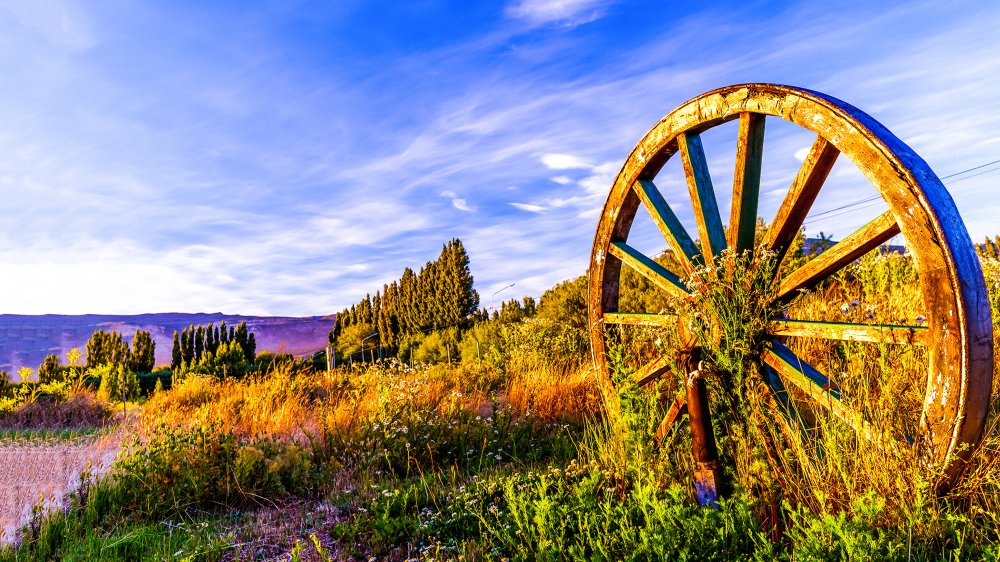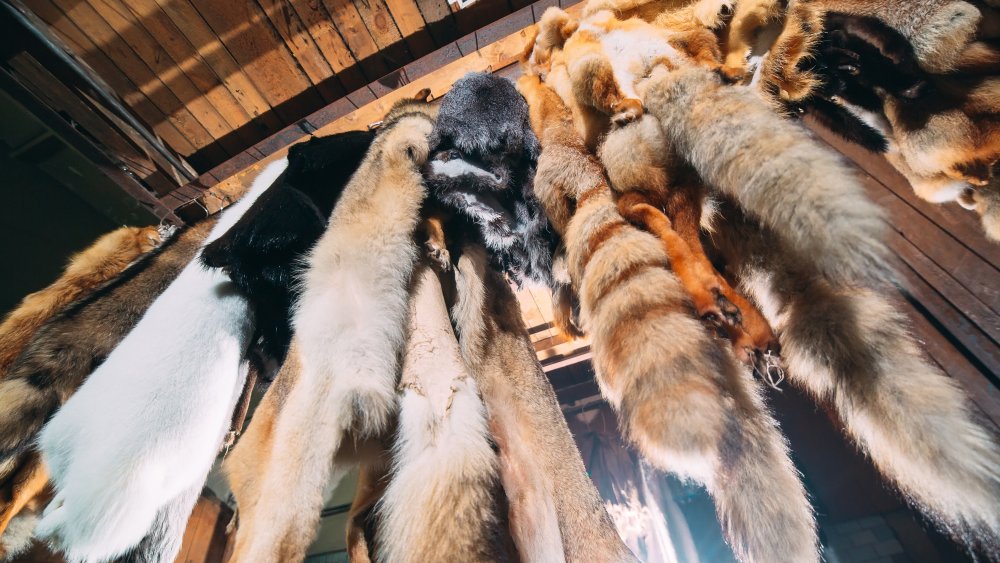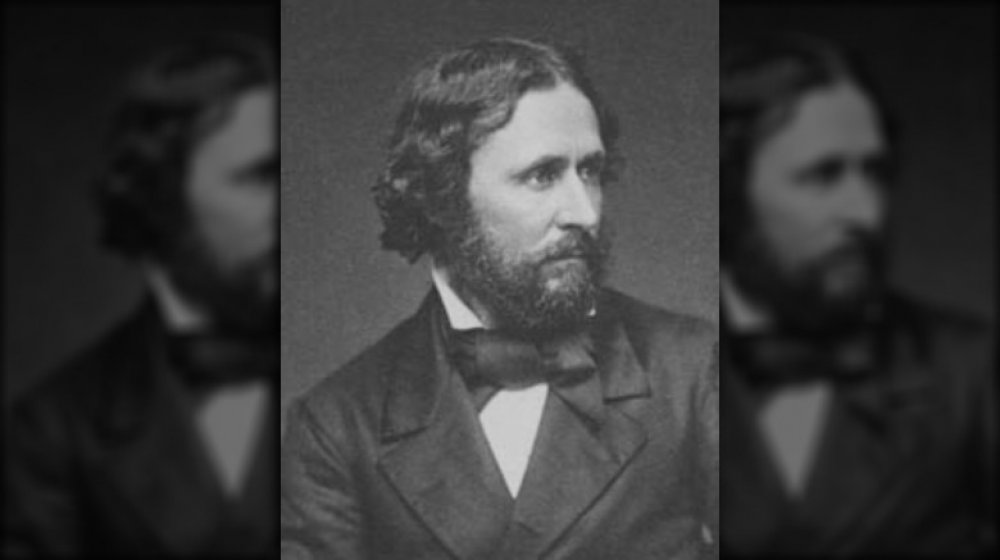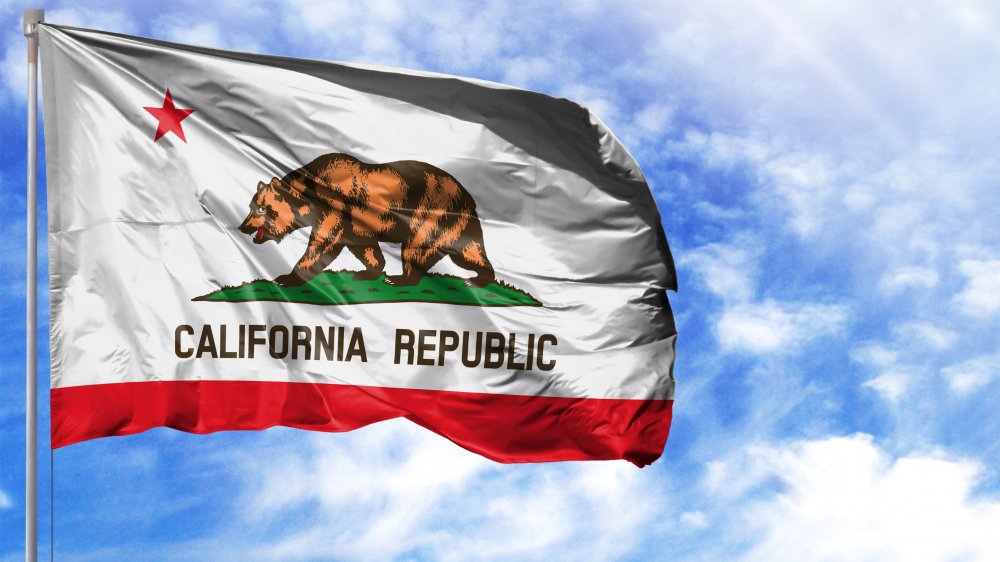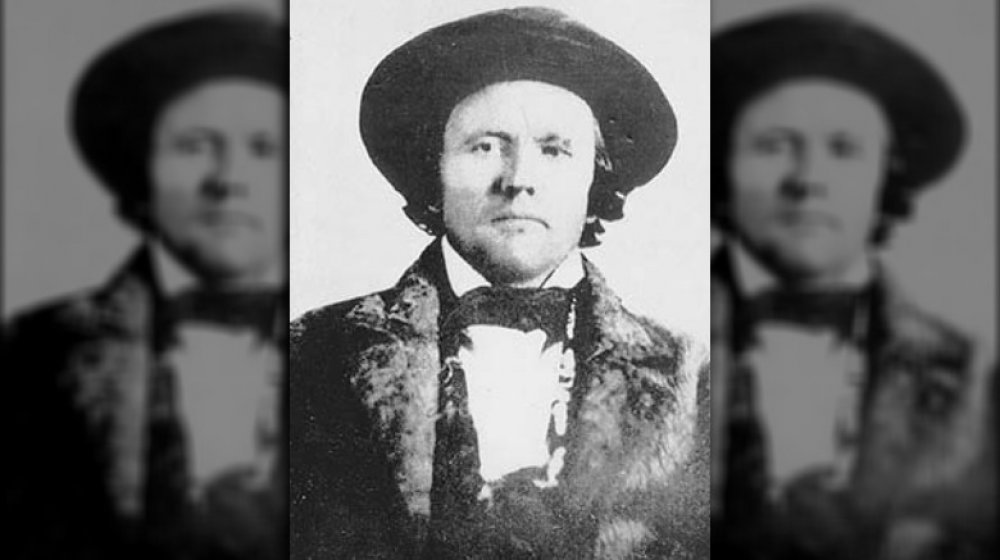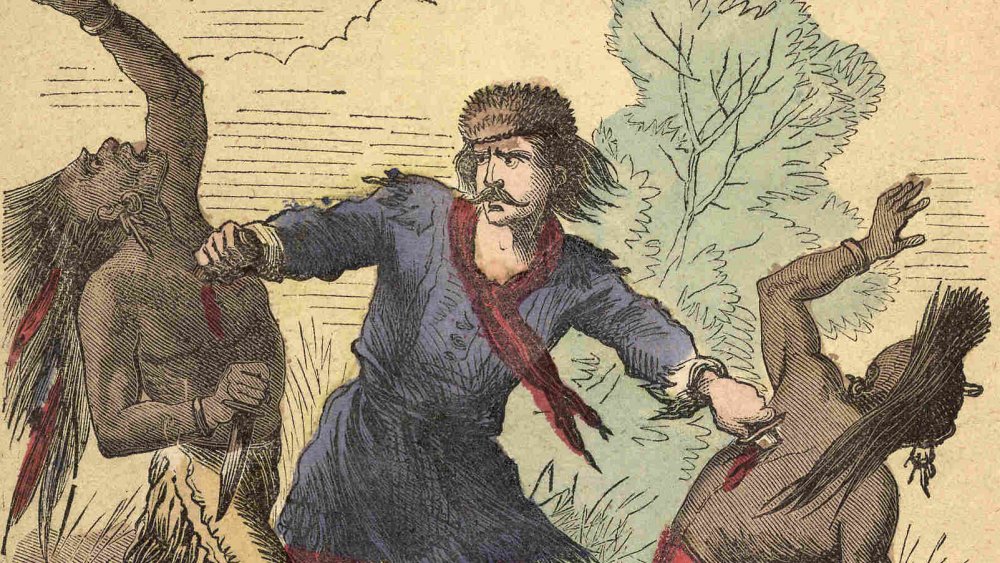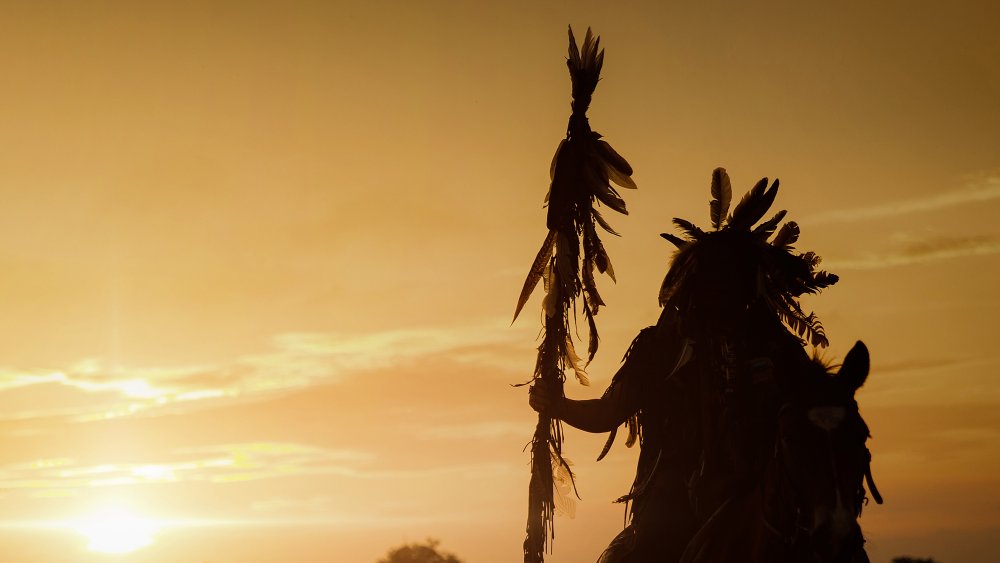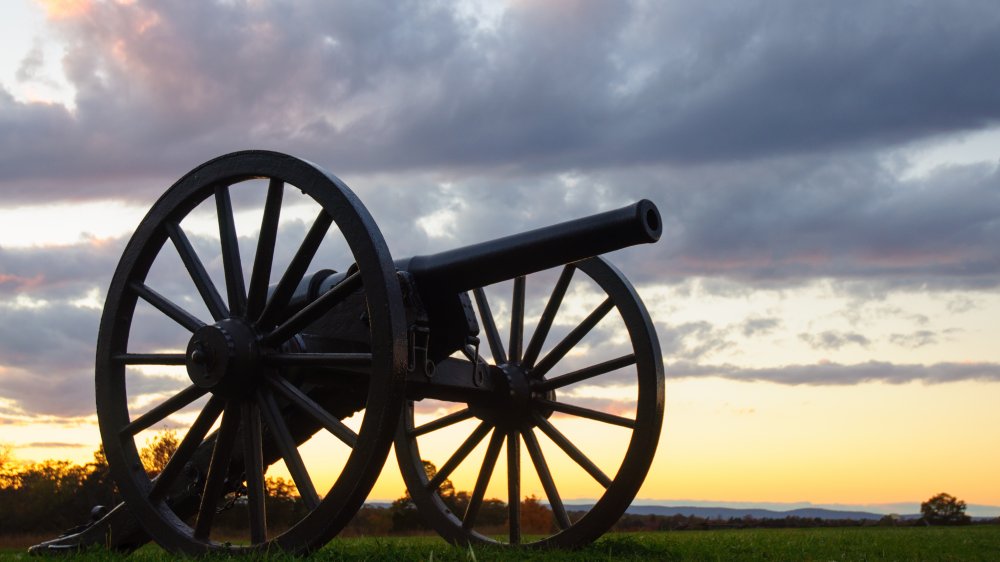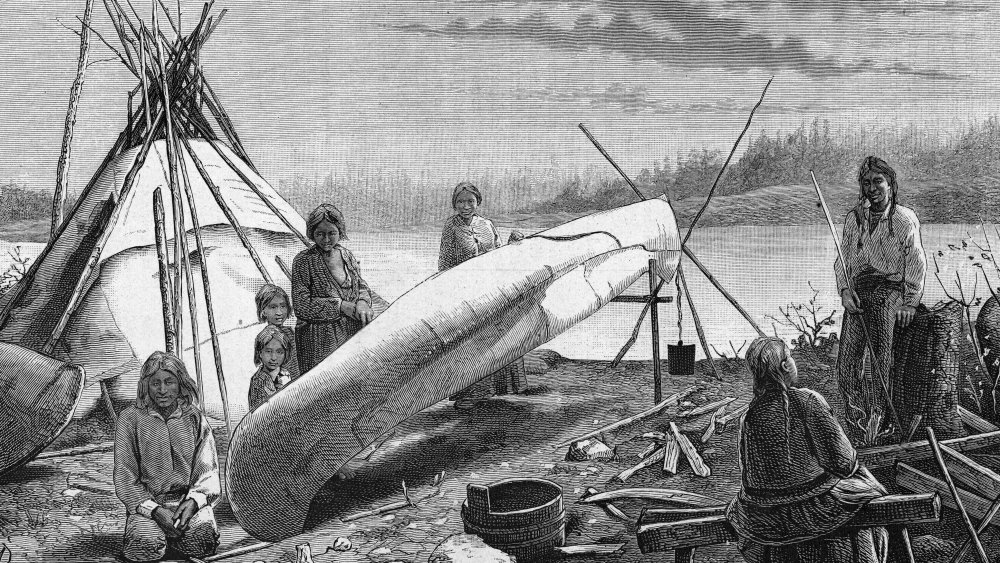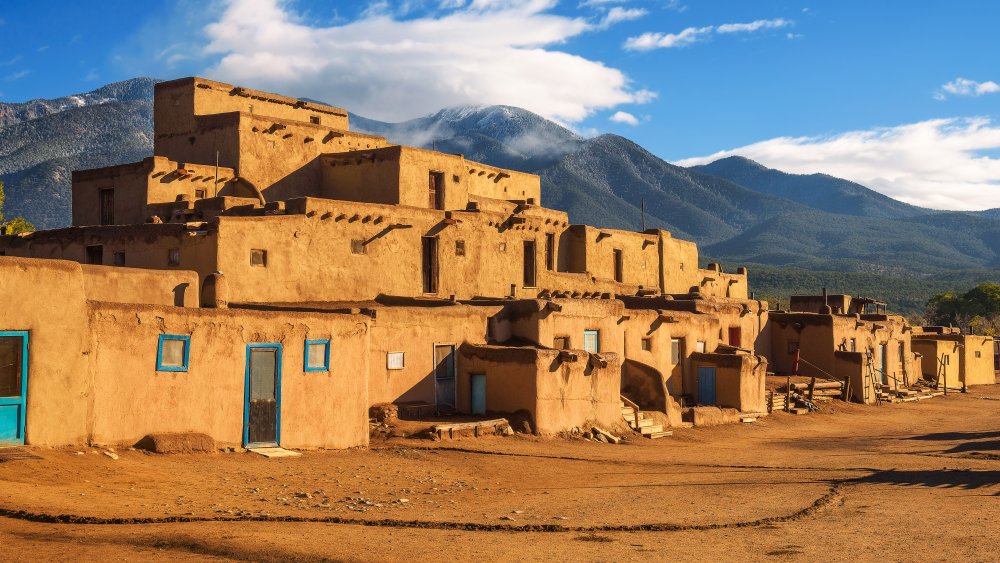The Real-Life Story Of The Legendary Kit Carson
There are many famous frontiersmen who took part in American westward expansion, but very few lived like the legendary Kit Carson. Meriwether Lewis, William Clark, Davey Crockett, and Daniel Boone defined the life of a frontiersman, but Kit Carson lived it many times over. If you think you're a "jack of all trades," then you have a lot to live up to, because Carson definitely sets the bar. Some of his jobs include mountain man, fur trapper, guide, cook, saddle-maker, Indian agent, and a colonel for the U.S. Army.
Author Hampton Sides told CBS News that Carson covered over 20,000 miles (mostly on a mule!) as he traveled the Rocky Mountains and explored even more of the West while riding along the Oregon Trail. However, for all the great achievements in his life, Carson also made many wrong decisions that led to the deaths and shattered lives of thousands of Native Americans, leading some to ask the question, "Was Kit Carson a hero or a villain?" People will have to decide, and hopefully, the right decisions will be made. However, Kit Carson still has a tale to be told, so here's the real-life story of the legendary Kit Carson.
Kit Carson's early life
Wild, adventurous mountain man Christopher "Kit" Carson was once an innocent little tike like the rest of us. According to Britannica, Carson was born in Madison County, Kentucky, on Christmas Eve in 1809. It wasn't long until Carson's family would head further west, settling in Howard County, Missouri, and living on lands purchased from the sons of another popular frontiersman, Daniel Boone.
Carson's father died when he was nine, and he ultimately made the choice to stop going to school so he could help his family. Leaving school would leave Carson illiterate, something he'd later regret, but his image and personal conquests would eventually be featured in some of the most popular dime novels of the time.
According to Biography, Carson became an apprentice saddle-maker starting at age 14, but before long, he would saddle up himself and begin his travels westward. In 1826, Carson ran away from home and joined a group of fur traders who were heading to Santa Fe, New Mexico.
Kit Carson heads west
As a teen, Carson worked multiple jobs driving wagons, mining copper, and translating Spanish for the mountain men after traveling the Santa Fe Trail to its eponymous destination. He joined Ewing Young's party of 40 trappers and began learning the trade and exploring the territories he'd dreamed of when he was a boy. Fact Cards notes that Young was a Tennessee native who settled in Taos, New Mexico, and built up his fur trade. According to the book Kit Carson Days by Edwin Legrand Sabin, Young was like a mentor to Carson, who was eventually made his lieutenant due to his dedication, hard work, and cool-headedness.
According to WyoHistory.org, Henry Inman, one of Young's men, described Carson as "brave but not reckless ... Under the average stature, and rather delicate-looking ... nevertheless a quick, wiry man, with nerves of steel and possessing an indomitable will ... full of caution, but show[ing] a coolness in the moment of supreme danger that was good to witness."
Carson explored the territories of Arizona and California while learning to trap beaver under Young's command. Carson would also spend this time learning how to speak Spanish and French. Later, he would head back to Taos a little older, wiser, and with much more experience.
Kit Carson's fur trapping days
In 1831, Carson met another fur trapper named Thomas Fitzpatrick and joined his party to head into the elevated terrain of the Rocky Mountains. Carson had graduated to the big leagues and was now a full-time trapper and a genuine mountain man. They traveled through the Rockies and out to the headwaters of the Missouri River. This experience helped mold him into a seasoned and trustworthy guide — something Carson had always aspired to be. Carson started making a name for himself, and his services were becoming in-demand.
Carson would work for ten more years as a trapper. As the fur trade began to decline and the demand for finer materials like silk started to grow, Carson knew it was time to jump ship and find a new steady line of work. According to Young American Republic, while aboard a steamship on the Missouri River, he met the esteemed John C. Frémont, a United States Army officer who hired Carson as a guide for $100 a month. The two would make three very dangerous and exciting trips across the Oregon Trail.
Kit Carson travels with John C. Frémont
Frémont (pictured above) and Carson were very alike: Both their fathers died when they were very young, and they both came from humble beginnings. They also had their differences: Frémont had a formal education, while Carson did not. Young American Republic says the two were able to bond and soon began the first of three expeditions into both charted and uncharted territories of the West. First, they went through the South Pass of the Oregon Trail in present-day Wyoming. After five months, the mission was complete, and Frémont was able to write reports on the trail, which got the attention of more travelers heading out West.
On their second expedition, they'd map out the rest of the trail from South Pass, Wyoming, to the Columbia River in Oregon. They also traveled to Utah, California, and Nevada. While on their mission, Carson was able to use his mountaineering skills to find resources and locate other travelers with supplies whenever they started running low. Carson was also able to track down two Native Americans accused of ambushing and killing a group of travelers.
On their third mission, Carson and Frémont made a track from California to Oregon. During this mission, the group consisted of 60 men and provided information to President Polk, who was hoping to take California from Mexico.
The Bear Flag Revolt
In 1846, while on their third expedition, Carson and Frémont became a part of the Bear Flag Revolt. The Los Angeles Times says Frémont's first encampment was set up a few miles from Sutter's Fort, where the discovery of gold would bring about the Gold Rush. Frémont began to promote patriotism for the United States and started urging farmers, hunters, and mountain men in different parts of California to cause an uprising. The Americans were asked to leave the territory, owned by Mexico, but they refused. This led to days of violence and the Americans seizing more land. Independence was declared from Mexico, and they announced a new "California Republic." A picture of a grizzly bear and a red star was raised as a flag in Sonoma, and the men became known as the "Bear Flaggers."
During all this, Frémont was impressed with Carson, saying he would have been a better field marshal than a frontier trapper. Eventually, Carson was sent to Washington D.C. to deliver reports of what happened to President Polk.
Kit Carson's role during the Mexican-American War
The Bear Flag Revolt led to the Mexican-American War. During this time, Kit Carson was sent on secretive missions that saved the U.S. Army in California. In September 1846, Carson was on his way to Washington with more news of the rebellion in California. After getting past the Rocky Mountains, Young American Republic says Carson ran into General Kearney, who ordered Carson to change his course and guide his men back toward San Diego since they were low on supplies. While on their way back, they were attacked by Mexican soldiers. Kearney, in a panic, realized he needed more men and sent Carson on a dangerous mission by himself, having him hike 25 miles back to San Diego to get reinforcements.
Carson faced the possibility of capture by Mexican soldiers the whole way but completed the trek in less than two days. He was able to send in reinforcements, who defeated the Mexican soldiers, and head back to San Diego. Carson's bravery and experiences as a mountain man helped America win the Mexican-American War and added to his fame among settlers.
Kit Caron's legacy in dime novels
As Kit Carson traveled the Rockies, traversed the Oregon trail, fought off Native Americans, and became part of consequential moments in American history, his stories started to take on a life of their own. Authors would pen pulp fiction and dime novels which allowed Carson to become known all over the country. He was seen as a brave frontiersman and a hero by American settlers due to highly exaggerated stories based on the most exciting and dangerous moments in his life. Black Hawk Museum mentions that first story about Carson, An Adventure of Kit Carson: A Tale of the Sacramento, was printed in Holden's Dollar Magazine.
According to True West Magazine, Charles Averill's pulp fiction Kit Carson, Prince of the Gold Hunters wrote Carson as a mass killer of Native Americans and credited him as "the man who discovered gold in California." In other pulp, he was described as someone who could pull off things most humans couldn't, riding on horseback holding beautiful women in one arm while fighting off the Natives with the other. When Carson finally saw some of these tall tales, he modestly replied, "That thar may be true but I hain't got no recollection of it."
Kit Carson and singing grass
According to Hampton Sides' book Blood and Thunder, while at an annual rendezvous for mountain men in southwestern Wyoming, Carson met a gorgeous young Arapaho woman named Singing Grass. Carson immediately lusted for Singing Grass — however, things weren't going to be so easy.
There was another man in attendance who also had a great affection for Singing Grass: Joseph Chouinard. Chouinard was described by many as "the Bully of the Mountains," though he was simply known by others as "a stupid-looking man." Carson described him as "a large Frenchman, one of those overbearing kind and very strong." Singing Grass was smitten by Carson and picked him from a lineup of suitors during one of their ceremonial "soup dances." Chouinard was crushed, but rather than sulk alone, he became loud and made a fool of himself by insulting her. A drunken Chouinard soon proceeded to antagonize Carson and his camp, saying: "Mewling schoolboys! I could take a switch and switch you!"
Carson threatened him back, proclaiming that he was "the worst American in camp." Chouinard didn't back down, so Carson then yelled: "Stop right now, or else I'll rip your guts!" Then it was on. Both men to got on horseback and galloped toward each other like medieval knights equipped with guns and fired, point-blank. Carson was left with a scar on his face, but his shot blew Chouinard's right thumb off. He never bothered Carson or Singing Grass again.
When Kit Carson became an Indian agent
By 1853, Kit Carson had begun to use his efforts to aid and assist the Native Americans by serving as an agent in the Office of Indian Affairs. Biography notes that Carson helped several tribes, mainly the Utes and the Jicarilla Apaches. While making peace with the Natives, Carson would come into conflict with his superior, Territorial Governor David Meriwether. Carson doubted Meriwether's ability to form good relations with the Natives, while Meriwether doubted Caron's competence as an agent due to him being illiterate. The two would feud and make harsh remarks about each other for years. Their relationship grew so bitter that Meriwether would undermine Carson by trying to ruin his career and reputation as a backcountry man.
According to Thomas W. Dunlay's book Kit Carson and the Indians, on one very eventful day, Carson went against Meriwether's orders and gave more sheep to the Native Americans than he was instructed and then made Meriwether hide with him under the bank of a river after news of a possible impending Navajo attack. Carson knew the Natives better than Meriwether and told him that if they didn't hide, they would certainly be killed. Meriwether found the perfect opportunity to ruin Carson by suspending him for disobedience of orders, insubordination, and cowardice in the presence of Indians. Carson, dedicated to helping the Natives at the time, later apologized and was given back his job.
Kit Carson joined the Union Army during the Civil War
According to The Atlantic, Carson would eventually join the Union Army and fight against the Confederates during the Civil War. In 1861, gold miners in Colorado would volunteer their services and risk their lives by joining the Union Army. Nearly 3,000 Texan Confederate troops were on their way to New Mexico, hoping to capture the territory along with California, which had gold mines and ports to the Pacific Ocean.
Per Biography, Carson, ready for action, would organize the First New Mexico Volunteer Infantry Regiment and be promoted to colonel. Eventually, Carson and his men were ready for war and fought against the Confederates in the bloody Battle of Valverde in 1862. Carson's regiment put up a fight but would ultimately lose, allowing the Confederates to take Albuquerque and Santa Fe.
While Carson may have lost the battle, soldiers from the First Colorado Infantry and Army regulars would fight the Confederates at Glorieta Pass, New Mexico, destroying wagons of their supplies. The Confederates stood little chance of making it through the arid climate and harsh terrains of the desert, which led to a win for the Union Army and an end to the Confederates' hopes of expanding westward.
Kit Carson's ruthless campaigns against Native Americans
After the Confederate soldiers fled New Mexico, Carson was ordered to round up Apaches put them on a remote reservation east of the Pecos River. His hopes of helping Native Americans and good nature as a peacemaker would end as a new wave of terror would reign down upon the Natives. Carson followed his orders and did unspeakable things, and as PBS writes, in 1864, he started rounding up Navajo and making them walk 300 miles to Bosque Redondo, New Mexico — a march known as the Long Walk. He and his troops would eventually kill Navajo men and hold women and children as prisoners.
History mentions that Carson's troops marched through the heart of Navajo territory and destroyed their crops, orchards, and livestock. The Navajos' resources were decimated, in addition to their spirits being broken and their defenses brought down. They were unable to defend themselves against the Utes, Pueblos, Hopis, and Zunis, who took advantage of their enemy's weakness by following the Americans onto the warpath. The Navajo would remain on the reservation, where they would be ravaged by disease, until 1868.
Kit Carson's last days
Carson left the Army in 1867 and moved to a small town in Colorado with his family. He had hoped to start a ranch and begin a new life yet again. Unfortunately, he wouldn't be able to. His health was declining, and his third wife, Josefa Jaramillo, died two weeks after childbirth. Heartbroken, sick, and tired, Carson died on May 23, 1868 at the age of 58 in Fort Lyon, Colorado. Carson had eight children with Josefa. He was buried in Taos, New Mexico, and according to the Colorado Virtual Library, many of Carson's descendants still live in the Arkansas Valley in Colorado.
Carson was responsible for many atrocities against the Native Americans while also helping them to live in peace and secure their traditions. He helped fight for America and expanded its borders. He inspired many people and is known by many as the greatest mountain man of all time. As one historian said, "Carson was a pretty decent chap and he did have some rather exciting adventures."
